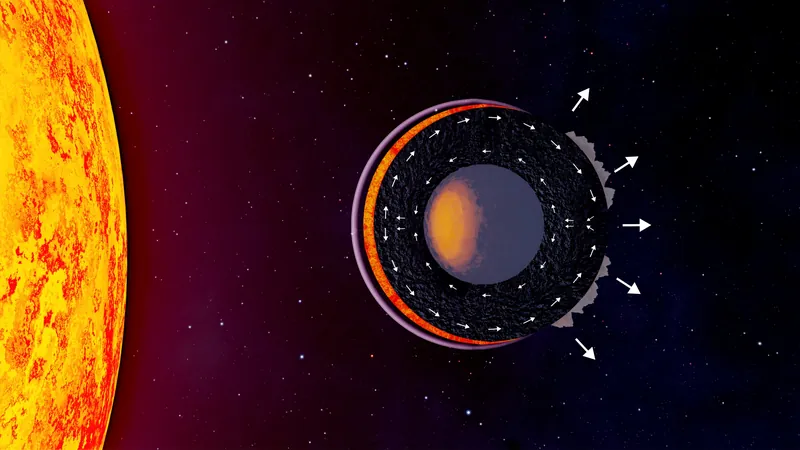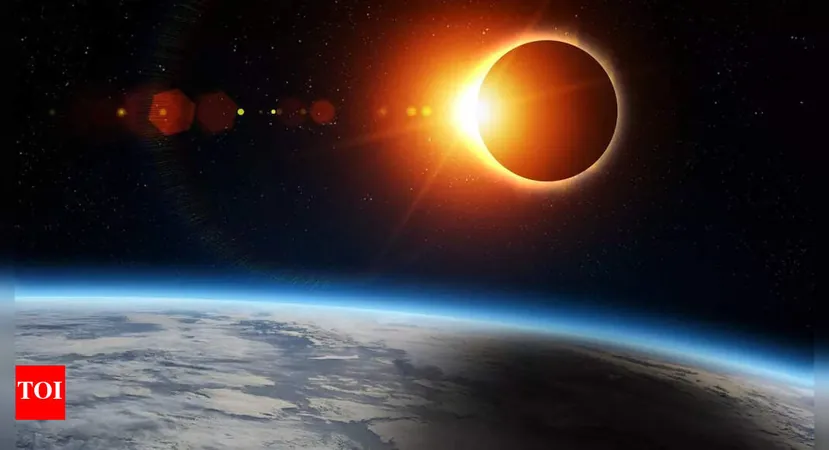
Scientists Unveil Groundbreaking Insights into Mysterious 'Lava Planets'
2025-07-29
Author: John Tan
A Revolutionary Framework for Understanding Lava Planets
A groundbreaking study led by a York University professor has just been published in *Nature Astronomy*, unveiling a simple yet powerful theoretical framework to decipher the evolution of exotic hot rocky exoplanets, popularly known as "lava planets."
First author Charles-Édouard Boukaré, an Assistant Professor in the Department of Physics and Astronomy, emphasizes that lava planets exist in extreme orbital configurations that challenge everything we know about rocky planets in our solar system. This uncertainty has left researchers eager to uncover the mysteries these fiery worlds hold.
The Fiery Nature of Lava Planets
So, what exactly are lava planets? These extraordinary planets are Earth to super-Earth-sized and orbit perilously close to their respective stars, completing their orbits in less than a single Earth day. Much like our moon, they are expected to be tidally locked, presenting the same face to their star at all times. This unique positioning leads to scorching temperatures on their dayside, where silicate rocks literally melt, creating an environment unlike anything we can find in our solar system. Their extreme characteristics and short orbits allow astronomers to observe these exotic worlds easily, providing a unique glimpse into planetary evolution processes.
Understanding Interior Dynamics and Composition Changes
This pioneering study merges insights from geophysical fluid mechanics to delve into how the compositions of lava planets change over billions of years through a process akin to distillation. As the rocks melt or vaporize, essential elements like magnesium, iron, and silicon behave differently across vapor, liquid, and solid phases. The exceptional orbital configuration of these planets helps maintain equilibria between vapor, liquid, and solid forms, driving their long-term chemical evolution.
Two Diverging Paths of Evolution
Utilizing cutting-edge numerical simulations, the research team forecasts two distinct evolutionary states for lava planets: 1. **Fully Molten Interior (Young Planets)**: The atmosphere reflects the planet's bulk composition, with heat transport from the molten core keeping the nightside active and warm. 2. **Mostly Solid Interior (Older Planets)**: Only a thin veneer of lava remains on the dayside, leading to depletion of elements like sodium and potassium in the atmosphere.
Unleashing the Power of JWST for Groundbreaking Discoveries
Initially conceived as an exploratory research avenue, this study has unlocked a promising new frontier in exoplanetary research. The compelling predictions outlined have facilitated the acquisition of 100 hours of observation time on the James Webb Space Telescope (JWST)—the most advanced infrared observatory known to date. These observations, slated to test the theoretical framework proposed in this study, are spearheaded by co-author Prof. Lisa Dang.
The upcoming JWST missions promise to provide unprecedented insights into the atmospheres of distant lava planets, potentially revolutionizing our understanding of how such extreme environments evolve over time.




 Brasil (PT)
Brasil (PT)
 Canada (EN)
Canada (EN)
 Chile (ES)
Chile (ES)
 Česko (CS)
Česko (CS)
 대한민국 (KO)
대한민국 (KO)
 España (ES)
España (ES)
 France (FR)
France (FR)
 Hong Kong (EN)
Hong Kong (EN)
 Italia (IT)
Italia (IT)
 日本 (JA)
日本 (JA)
 Magyarország (HU)
Magyarország (HU)
 Norge (NO)
Norge (NO)
 Polska (PL)
Polska (PL)
 Schweiz (DE)
Schweiz (DE)
 Singapore (EN)
Singapore (EN)
 Sverige (SV)
Sverige (SV)
 Suomi (FI)
Suomi (FI)
 Türkiye (TR)
Türkiye (TR)
 الإمارات العربية المتحدة (AR)
الإمارات العربية المتحدة (AR)